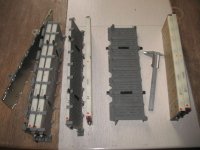Just a total newbie here, having just discovered your site ... I've spent several hours reading everything I could on using the Prius Batteries ...
I had thought I would have to use several hunded pounds of the heavy lead acid batteries for a small 48V - EV project, a BMW Isetta (Urkel Car) weighing 600 lbs ... using mostly upgraded 48V electric golf cart parts for the electric system ...
The cost of the Lithium battery's such as LiFeYPo4, Thundersky or Headway batteries are just too high ...
Is it possible to use the Prius Gen2 battery pack as a 48V battery power source by grouping the cells into 4 separate blocks of 7 (7x7.2V) cells in series, then being used as a 48V power supply while mounted in the origional Prius battery case ... 4 blocks or 7 for a total of the 28 cells at 48V ?
It seems like such a good choice ... the price mainly, but also durability with all the R&D that Toyota has done...
It would be almost pre packaged while still arranged in the origional Prius battery box using primarily the origional mounting and connections between the cells with the ability to replace damaged cells as required ...
Is it possible ?
Could it be charged as 4 separate blocks of 7 cells at 48V ?
What would the best or cheapest method of charging or managing each 48V block of cells ?
With the current availability and cost of the used Prius batteries ... I realize that I may be able to build a much better EV now than I had thought possible, with not having to carry around the weight of lead acid batteries, but I will definately have to do alot more research on what would be required for battery charging and management using the technology in recycled Prius batteries ...


